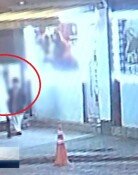Youth consumption of boilermakers
Youth consumption of boilermakers
Posted December. 10, 2012 09:00,
The 1992 Hollywood movie A River Runs Through It, which is set in the U.S. state of Montana in the 1920s, has scenes in which the main character and his brother throw long fishing gut into a stream. People who enjoy drinking alcohol might have more vivid memories of boilermakers that the two brothers enjoy at a bar. Literally meaning a producer of a boiler, the drink is made by dropping a shot glass filled with whiskey into a glass of beer. This is the origin of the Korean boilermaker. Korean officers who went to the U.S. for training brought back the boilermaker and spread it to the Korean military. Rumors have it that none other than former National Assembly Speaker Park Hee-tae, former head of the Chuncheon District Public Prosecutors Office, brought the boilermaker to the Korean prosecution.
In the U.S., port laborers were the main consumers of boilermakers. According to the International Brotherhood of Boilermakers, a sub-umbrella union of boiler makers and workers engaged in the production, maintenance and management of large steel structures such as vessels, only if the drinker finishes a glass of beer containing a shot glass filled with whiskey in one shot can the drink be called a boilermaker.
Entourage, a U.S. TV drama series that aired several years ago and featured the stories of a Hollywood star and his friends, had a scene in which the main characters drink a "sake bomb," or a boilermaker using the Japanese liquor sake instead of whiskey. A sake bomb is made by putting a cup of sake on a pair of chopsticks atop a glass of beer and then hitting the table to drop the cup into the beer before drinking. Movie clips displaying images of domino liquor are also available online. Given that most Japanese say they learned about the boilermaker from Koreans, the sake bomb might have originated from the Korean boilermaker.
According to a study by the Korea Food and Drug Administration, people in their 20s drink more boilermakers than those in their 30s through 50s. Worse, 22.7 percent of teens aged 15 to 19 have had boilermakers. What a pity that young college students learn too early about the drink, which office workers heavily consume to ease workplace stress. Young Koreans seem to be truly struggling these days as the popular essay book Youth Is Pain suggests.
Weekend Section O2 Team Reporter Min Dong-yong (mindy@donga.com)







